
Shy, Timid, Spooked: The Trials of the Scaredy Cat
Scaredy cats... There are many different types: the one who only really “comes around” for one person and hides under the bed when anyone else is around. The one who is generally bold but jumps and flees with any unexpected noise or movement. The one who does well with people but doesn’t seem to understand that her feline brothers and sisters just want to play, running away in terror or hissing and screaming defensively with every playful bop. The truly terrified one that backs into corners and tries to climb up walls or urinates/defecates beneath itself when approached. The one no one has ever seen, but know exists in the home because it eats and uses the litter box. The one who is a bit more aggressive about its fear, using teeth and claws to show you how it feels – but you know deep down there’s a sweet cat in there, you just haven’t been able to break through…it might cry sweetly at night when the home is quiet, it may have been a happy kitten and something went awry along the line. These are just a few. Today we’ll discuss situations like these, potential causes, how to deal with and potentially avoid them.
The reasons for a scaredy cat vary just as much as the symptoms. Well, almost; It can be territorial/environmental insecurity due to threat: another animal outdoors, another animal in the home (bullying, differences in confidence or energy levels), not enough resources, not enough enrichment. It can be a lack of socialization – these cats can be feral, semi-feral, or just generally under-socialized. They may be bold and boisterous with the one person they have grown to love and trust, but not generalize that trust with humans overall because they didn’t have enough human interaction throughout their lives. They may be in pain, as pain can cause heightened anxiety. The cause may even be genetic! Some cats are simply genetically predisposed to a heightened fight or flight response, lower sociability, and higher anxiety/instance of anxiety disorder.
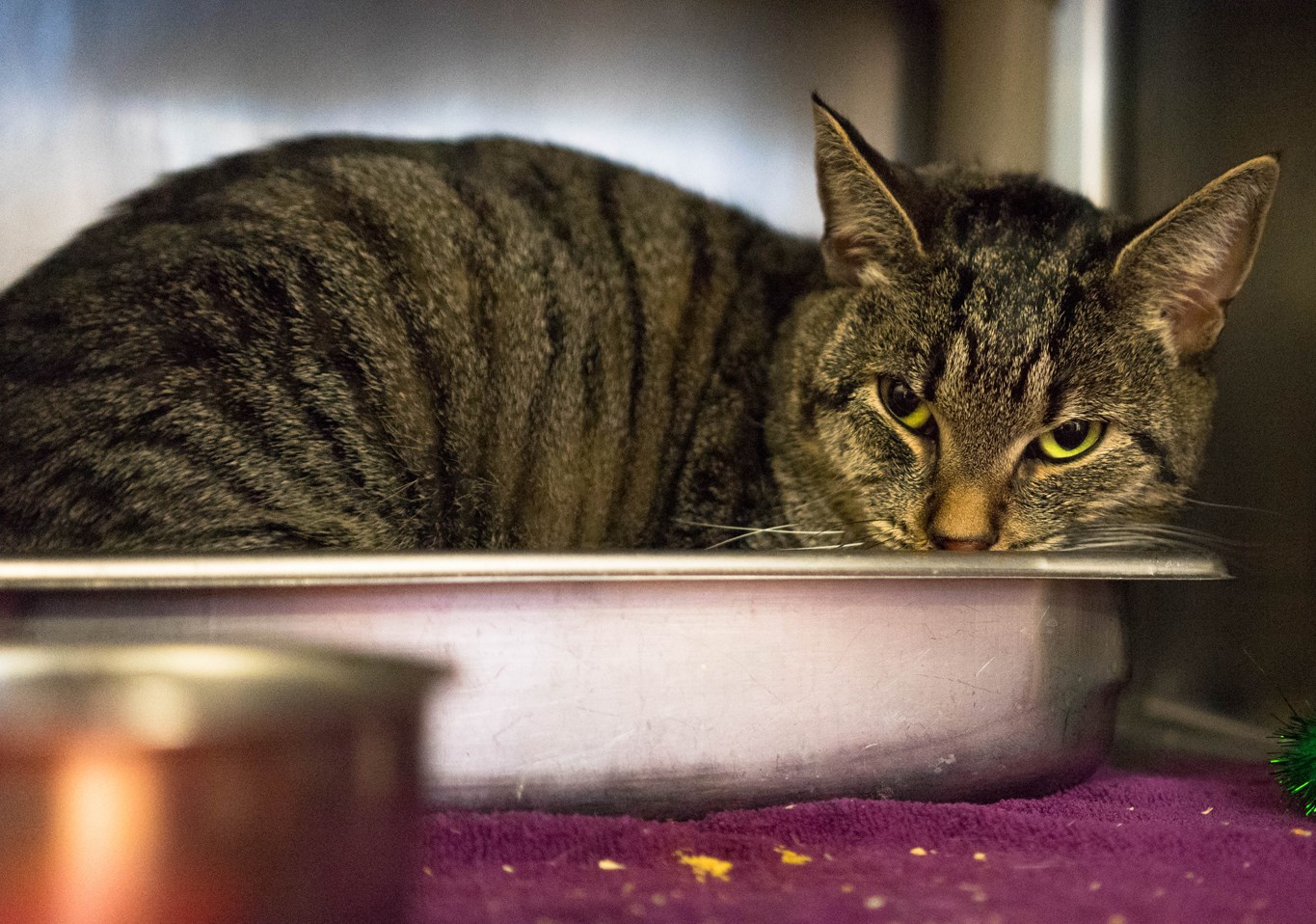
Let’s look at some of the most obvious situations…
You found a cat outside and have decided to take it in. It’s terrified, but you think it will come around. You’re just not sure what to do.
This one is tricky, but sadly, very common in today's world. As a general rule, if this cat seems fairly healthy and well-kempt: is grooming itself, not emaciated or otherwise unwell – I would advise finding a TNR clinic, getting it altered and vaccinated, then returning it to the outdoors. It may sound cruel to you but it may be the best for this specific cat, and it's environment. In a perfect world, yes, they’d all have warm, loving homes and be couch potatoes. This is not a perfect world and we need to acknowledge the limitations we have. There are too many cats and too few resources. They cannot all be socialized appropriately. Cats are selectively social, they can revert to a "feral" state at will, and we have to acknowledge that some just never got that "social" part - they’re not born snuggly little furballs. Depending on what this cat’s history was, it may have never been in a home or around people beyond occasionally being left a bowl on a back porch. You bringing it in may be the most traumatic experience of its life. Could it be socialized? Potentially. Is it likely? Probably not. Would it be a lot of work? Yes! You could have other issues as well – it may always have the desire to go outdoors, it may always spray, even after alteration. I’m not going to fully discourage you from adopting a cat from outside; it can be a beautiful thing and it’s one of the reasons shelters encourage not bringing everything you find to them, but if it’s incredibly fearful and healthy, don’t think you must rescue it. Only take it in if it’s super friendly and pursuing you, or seems otherwise in need. (And if you do these things, always practice your due diligence, issuing found reports, posting in groups, maybe visiting a few neighbors, calling some shelters, and finally, of course, scheduling some veterinary appointments to make it official! Make sure the cat isn’t owned already and someone hasn’t lost it…you may think someone abandoned it, it’s neglected or abused when you see the state it’s in, but that’s not always the case. We have reunited cats with their guardians after several months missing – one found in a sewer drain during heavy rain. She was matted, filthy, thin, and was already a senior! We might have made assumptions, but she simply snuck out and her guardians were devastated and swore she had passed. They rushed to the shelter immediately when we called and their reunion was an amazing thing to witness. The world is not always as horrible as you think it is.)
If the cat cannot be safely returned outdoors for some reason or another and you feel you must acclimate it, how you deal with it will depend on how fearful it is. If it’s climbing walls or soiling itself, you need to confine it to a small, quiet area as soon as possible. A dog crate in a quiet room would be ideal. Make it cozy, a box inside for resting, a box for littering, food and water, blankets – preferably somewhere to get up off the floor of the kennel if the box is not sturdy enough, and cover with towels, blankets, or sheets to give it privacy. You do not want to flood the cat. Flooding was once thought to be somewhat beneficial, but it is an incredibly stressful technique that causes more harm than good, there are other ways to desensitize. Give the cat a day or two to relax. Please take caution now that the cat is confined – the fear may turn to aggression. The cat may bolt out into the home even though the home is overwhelming and terrifying for it; all it knows is that it’s scared and wants to get away. Take a sideways stance, do not try to touch the cat, do not make eye contact. Move slow. Provide maintenance care. If you have an object to use as a guard to prevent bolting, use it. If you have thick gloves to protect yourself from bites or swats, use them. You don’t know this cat, and cat bites are serious. Once the cat is cared for, give it a few hours to calm from that experience then come and sit calmly in front of the kennel with the blankets lifted just enough for the cat to see you. We are going to practice operant conditioning – negative reinforcement. You will sit there quietly and wait for signs of calming in the cat. When you present yourself you may anticipate hissing, ears pinned down, trembling, body pressed to the floor of the kennel, lip licking, dilated pupils. Wait for a change in these things. If the cat stops shaking, if it blinks or closes its eyes, if its tail relaxes, if it goes from a cowering position to a simple “lay,” if its ears move to a more neutral position – any of these things, you will put the blanket down and leave. You have just rewarded the cat for relaxing in your presence. This is called “Capturing calm” and it’s a method of training we use on extremely fearful cats that cannot be rewarded using positive reinforcement yet. You are training the cat to be calm around humans – it works. Is it guaranteed to? No, certainly not. If this cat is truly feral, it may never come around and your presence may simply make it shut down further over time, but utilizing this method you will be able to tell within a week or two if things are getting better or worse. Conduct 1-2 sessions per day, 5 days a week. Let the cat relax at all times between this and maintenance care. Once the cat is relaxed when you present yourself – if that happens, try treats: canned tuna, cooked chicken, squeeze treat, canned food – anything. If the cat will eat in your presence, you’re in, and you could move to the next step…you might just be able to socialize this cat. I won't continue to go too in-depth, but ultimately, from here you’d start rewarding the cat for things like eye contact, standing up, moving forward in the kennel, sniffing you or an object presented, allowing touch or touching you(maybe with an object rather than your hand at first, just to be safe), showing affectionate behaviors. Eventually you might move the crate (if not already) to a room and open the door to let them have a slightly larger area and see how they do! There might be some reversion for each step of the process, but they can make their way back with a little help. Clickers help this process along, as do cue words – but for cats that are extremely fearful the clicker can be scary. It’s not absolutely necessary.
If the cat is just spooked but not to that extreme, confine them to a room and give them time, maybe use some calming aids. Provide some appropriate hiding area, visit with them and talk calmly. Use food reinforcement, if they’re calm enough to eat in your presence, you’re already half way there. If they’ll play, burn energy as much as possible. Energy = anxiety. The more energy out, the less stress pent up, the more malleable they’ll be. The biggest advice here; CONFINE. I’m not being dramatic, this is a cause for so many issues, so many returns, so many injuries. Friendly cat from the shelter, a cat from outside, cat rehomed from a friend; Doesn't matter…always confine. The fight or flight response can have dangerous consequences, limit their stimulation.
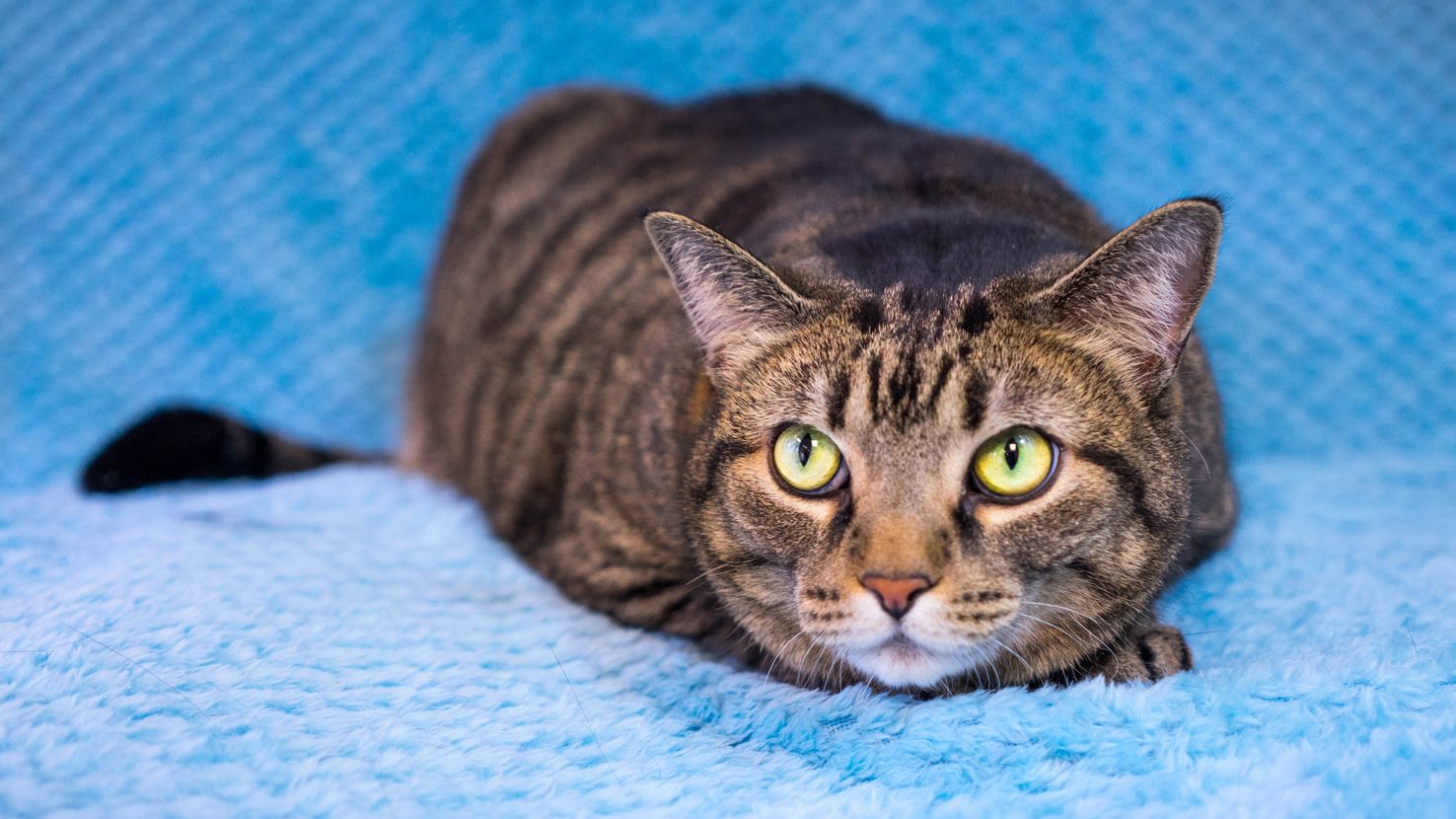
My cat is terrified of every sound…I’m always so anxious in the summer: Thunderstorms, fireworks…what can I do to help her? I’m pregnant, too, and I’m so worried about the crying sending her into a complete meltdown!
I’d recommend attacking this from a few angles all at once. First, set her up a safe space. Clean out some shoes from your closet and make it cat heaven in there – or if you have a spare room, let’s make it cozy. Put a bunch of her favorite things in here – hidey beds, cardboard boxes, if she loves catnip, load it up! Keep a Feliway diffuser in that room. Hold play sessions in there, snuggle time. Place items that smell like you in there...have an old T-shirt or blanket that you don’t need? Wear it or use it for a little while, dirty it up, and place it in there. Make it as comfortable as can be so she’s most likely to run in there when scared. You can even pick up a noise machine to play soothing music, the sound of the ocean, crickets...something that won’t scare her and may distract her from the noises that do. Or, a Bluetooth speaker on which you can stream David Teie’s cat music – David Teie got together with a group of scientists and an orchestra to create music that is actually soothing to cats. We like music that mimics the rhythms of our own heartbeats. Cats prefer things that mimic theirs, the frequencies of purrs, the rhythm of kneading, the sounds of their prey. They studied cats and their responses to different sound frequencies and patterns and have created several albums of music that actually work on a chemical level. It’s pretty weird stuff to hear, and absolutely fascinating. If you have an extra TV or tablet, set up cat TV, or a game like Friskies Cat Fishing when you know a storm is coming or there might be fireworks in the evening. These are just a few comfort and distraction pieces...what else? You could start using desensitization techniques. For storms, fireworks, and babyy cries: start playing those noises at low volume around the house regularly, at random intervals. As quiet as possible at first, and wait for calm, and reward. Try and make it a normal occurrence. Raise the volume as time goes on and the cat gets more comfortable. You may wish to get other baby sounds too, not just crying, to help prepare the cat for this big change! Due to a baby's proclivity to cry at any hour of the night, it might be a good idea to start training the both of you - playing this noise at random hours of the night. Set it as an alarm, play it every two hours. No fun, but, it's what life will look like! There’s a lot more that comes with introducing baby and cat than just noise, even the nursery can be an adjustment, so I do hope you look into that too!
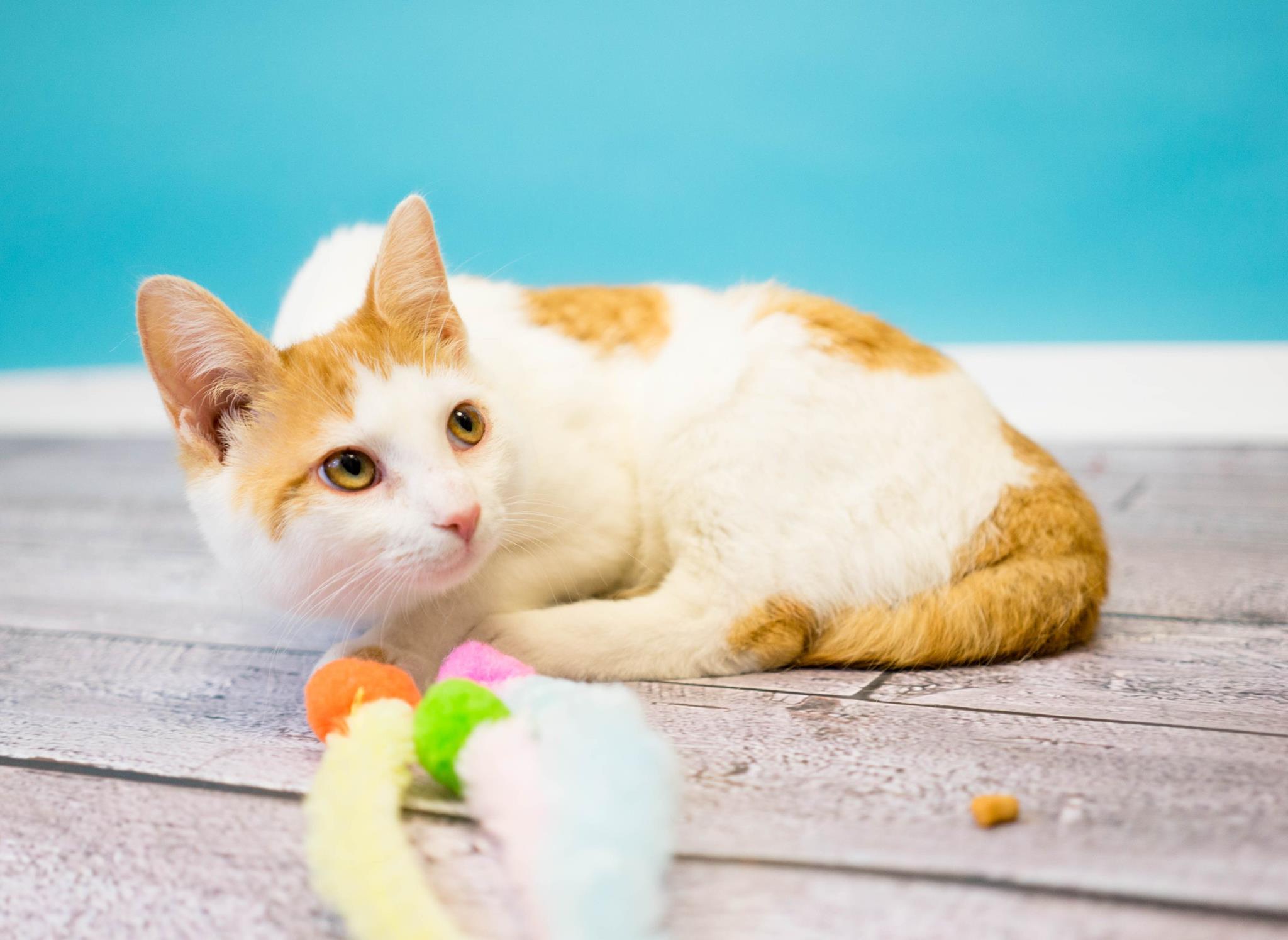
I have a 2-year-old and 7-year-old cat. The 2-year-old is very playful and really wants to be friends with my older boy, but he just wants no part of it. He runs and the younger cat chases him, which leads to hissing and screaming. He gets cornered and occasionally he’ll become aggressive towards the other cat. It’s been going on for a while and now the older cat rarely comes out from under my bed…what can I do?
This is really common, and it does suck; you wish they’d just snap out of it and be friends! Most of the time it’s not even that they dislike each other, either. The older cat can be perfectly fine with the younger/more confident one overall, but those unsolicited attempts at play are seen as threatening gestures. What gives? They speak the same language, after all!
Fundamentally, this is a mismatch in energy levels and confidence. The older cat is either low energy, low confidence, or both – the younger cat is high confidence and playful.When the older cat flees, it activates the younger cat’s prey drive – so even if they understood “Oh, he doesn’t want to” the instinct kicks in to chase, and it all goes sour. Once the older cat is cornered, it’s game over. Their relationship can be completely foiled in this situation, and the older cat’s confidence will continue to plummet. This doesn't mean it's time to throw in the towel and give up a cat right away, but you will need to work with both cats. Enrichment for both is step one. The younger cat needs more interactive play so that the older cat isn’t the most exciting thing in the room, he can be adequately distracted, and the instances of pursuit are lessened. Tire him out as much as possible: Energy out, energy out, energy out. For the older cat, it’s much the same – Energy out is stress out, and a successful hunt builds confidence. Let the old boy catch the toy more frequently than you might let the younger cat in the session, make him feel like a prime hunter. If he only wants to play with a laser, toss him treats every few minutes in the session and give him a little spoon of wet food or something high value after. As time goes on and confidence is built, if there is more than one person in the home, try and get them playing in the same area! First, opposite sides of the room, then try and move them closer together until maybe you can get them playing right next to each other or maybe even together. The scaredy cat might be cautious at first – too focused on what the other cat is doing to play…but give it time. Eventually, you should be able to get him going. You can pick up battery-operated toys they might be able to play with together. I solved a case like this using the “Cat’s Meow” toy! Each cat would get a wand session, then they’d be put in a room together with this. The wild child would be going crazy with this thing, and the scaredy cat watching from afar…a few sessions in, though, she couldn’t help herself and got involved. They sat together and learned to mutually play. The scaredy cat eventually became so confident that she started batting the other cat away from her beloved toy when he got too crazy and she wanted the swing!
Additional to play therapy, you also want to provide more options for the scaredy cat to get away. I find in most instances when these cats are being chased, the pursuer will not chase UP. Vertical spaces seem to break these things up, the instigator pacing below waiting for them to return to the ground and eventually losing interest. Walkways, shelves, cat trees – whatever you can do to provide the scaredy cat options off-ground. There can sometimes be the issue of these cats not wanting to be up high – low confidence cats trapping themselves down low and preferring to hide under a bed or in a box, but these aren’t great for getting away, a box is a great place to be cornered. Target training, luring, and stationing would all be great tools to get this cat going up, and likely staying up once they get used to it. You can also implement calming aids like Feliway, Zylkene, or CBD/Hemp oil with active cannabinoids if you’re open to it.
Finally, if these issues just don’t seem to be going away – Buspirone is a medication you could talk to your veterinarian about. This medication is rather unique, it has a special effect on lower confidence, anxious cats – it gives them the confidence to fight back! It makes them more bold and affectionate, more…themselves. The negative…you might not get much sleep due to some extra rubbing, bunting, and purring! It can get excessive, apparently. I would still implement other therapies along with medication, and do not expect a medication to be a lifetime bandaid – medication is meant to be temporary! Once the cat learns to stand up for themselves and build confidence, they should be able to safely wean off of the medication.
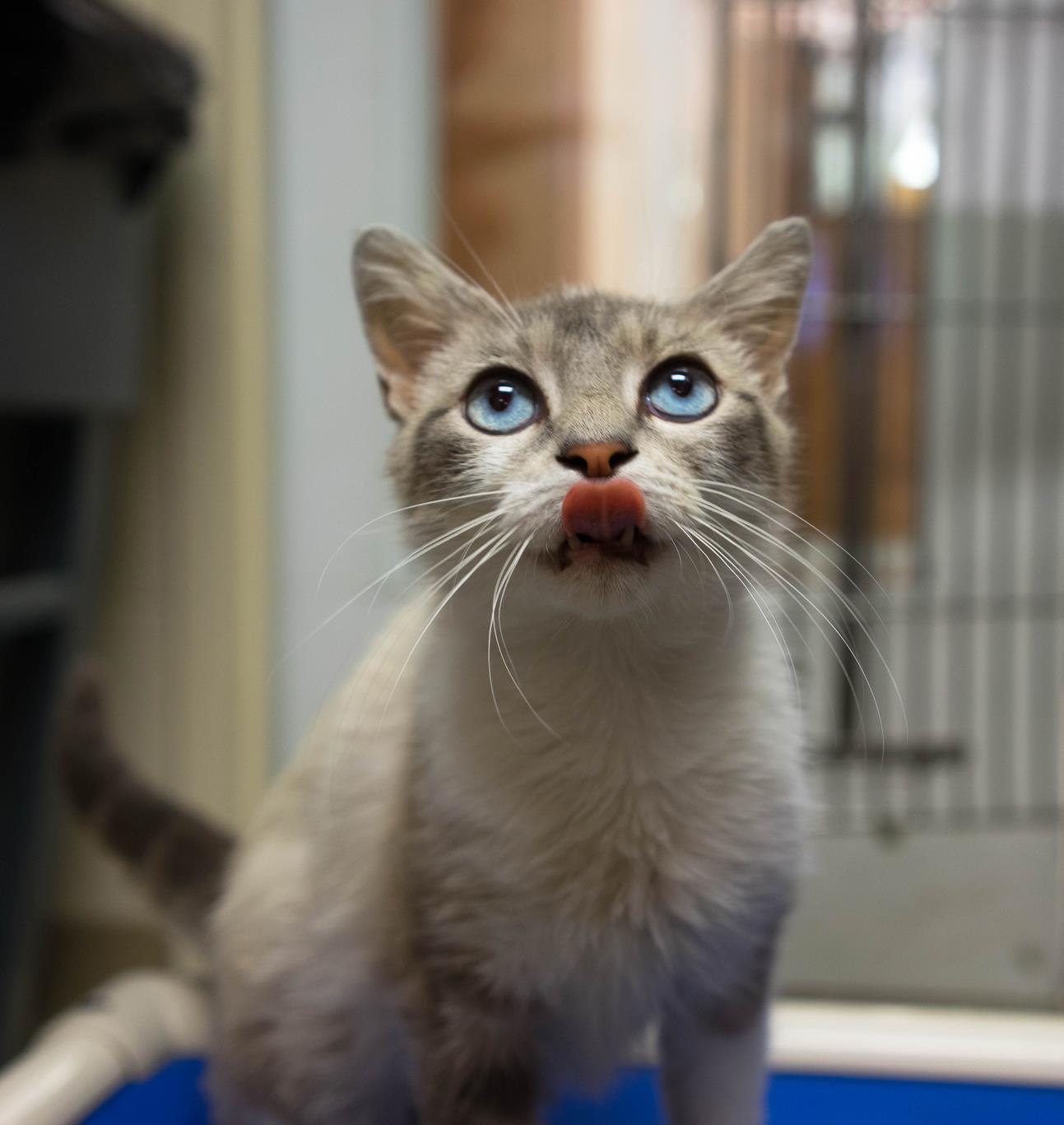
My cat has lived with me its whole life and we have an incredible bond, but my girlfriend is moving in next month, and my cat isn't taking to her. My girlfriend loves cats and it’s really hurting her feelings that even after a year of being here regularly, she still isn’t coming around…what can we do?
This one does suck, but she may come around! Since it’s just been you and her, she has no prior experience to tie this to and doesn’t know how to establish trust. If you’re male, she may not be familiar with women, so that concept is also foreign. Everything’s a little weird and different. If not, it’s just the idea of a new human. Establishing trust can be hard. If she just runs and hides when she’s around, the best advice I can give is to have your girlfriend start taking on some maintenance duties when she moves in. This might seem a bit unfair as the cat doesn’t even like her, but, it’s in pursuit of her liking her. If the cat is free-fed, I’d highly recommend switching over to scheduled feedings now, it will really help. Have your girlfriend feed her in a set location, then she’ll really know who’s providing the goodies. She brings the food, she cleans the boxes. Maybe not all the time, but at least half of the time. Have her attempt play. She may be reluctant to come to a toy in her hands, but keep trying. If the cat runs to a specific room, have your girl go in there and sit quietly with her regularly. Talk softly, toss high-value treats to her, but without trying to touch or interact...then just leave. Let her learn that she’s not a threat. Over time, she should come around. This same thing goes for new cats and toddlers, socializing with any new people – quiet time, no touching, let them come to you, do feedings and cleanings, play – eventually they learn.
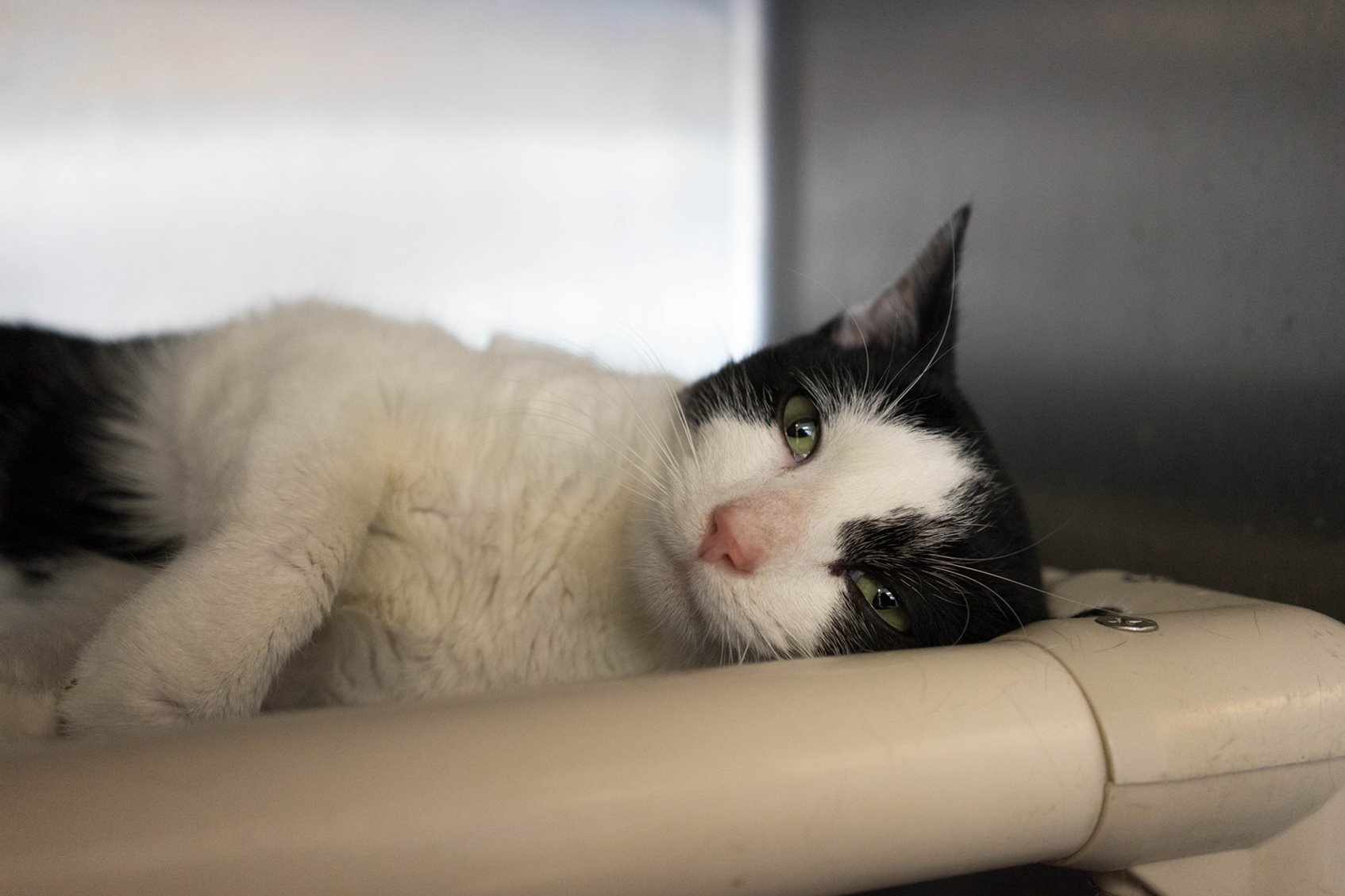
I have a cat that I never see. I adopted her as a kitten and she was super sweet but she developed an eye infection and after the meds she was never the same again. She never trusted me after that. I probably could have done more but, she was meant to be a companion for my son , now because of her fear that wasn't happening and he was really upset...so I adopted another kitten. Now the first cat just lives under the bed and seems to only come out at night. I feel like I failed her. Is there anything I can do?
I’ve seen this one before. She’s likely always going to be a little bit more anxious, and there is a chance that she may never fully come around, but you can start some exercises to help her out. Much like in the first question, you’d sit with her quietly in the bedroom she hides in, you can toss goodies, and hope she comes forward. That’s the start. You want her to approach you, then reward her only once she does so. The goal is to get her to come out from under the bed, and realize good things happen when she does. This will be a process, though! After that, we would work on touch in the same, gradual way. Reward for a sniff of the finger. Reward for letting you touch her nose. Reward for touching the paw - reward if she lets you give her a stroke. Or - desensitize - feed a treat that takes some time to eat, like a churu stick, and pet her as she eats if she'll allow. You can utilize calming aids and behavioral medication for her as well: Pheromone diffusers like Feliway Optimum, hemp oil with active cannabinoids, Zylkene, or something like gabapentin, fluoxetine, or buspirone. You can also use food as a lure if she is food motivated - putting the bowl under the bed and slowly moving it towards the edge as she eats, if she'll move with it or follow it. If you can get her out from under the bed for an extended time, I would block that under and provide some more appropriate hiding places, personally. We don't want to remove the option to hide, but we want her to do it in more appropriate ways - and give her a little push, as she may be crutching with the bed. I deal with this in cats coming into the shelter where they'll just refuse to come out of the carriers they came in for weeks on end if you don't make them shift to something else like a kuranda bed or cardboard box. Once we do that, though, these cats suddenly develop insane amounts of confidence, just from getting out of the carrier and having it removed from their environment! They basically imprison themselves in their fear. In general, I don't recommend dragging the cat out of hiding, but if you feel you must, immediately guide them to an appropriate hiding area rather than simply flooding them in an overwhelming room.
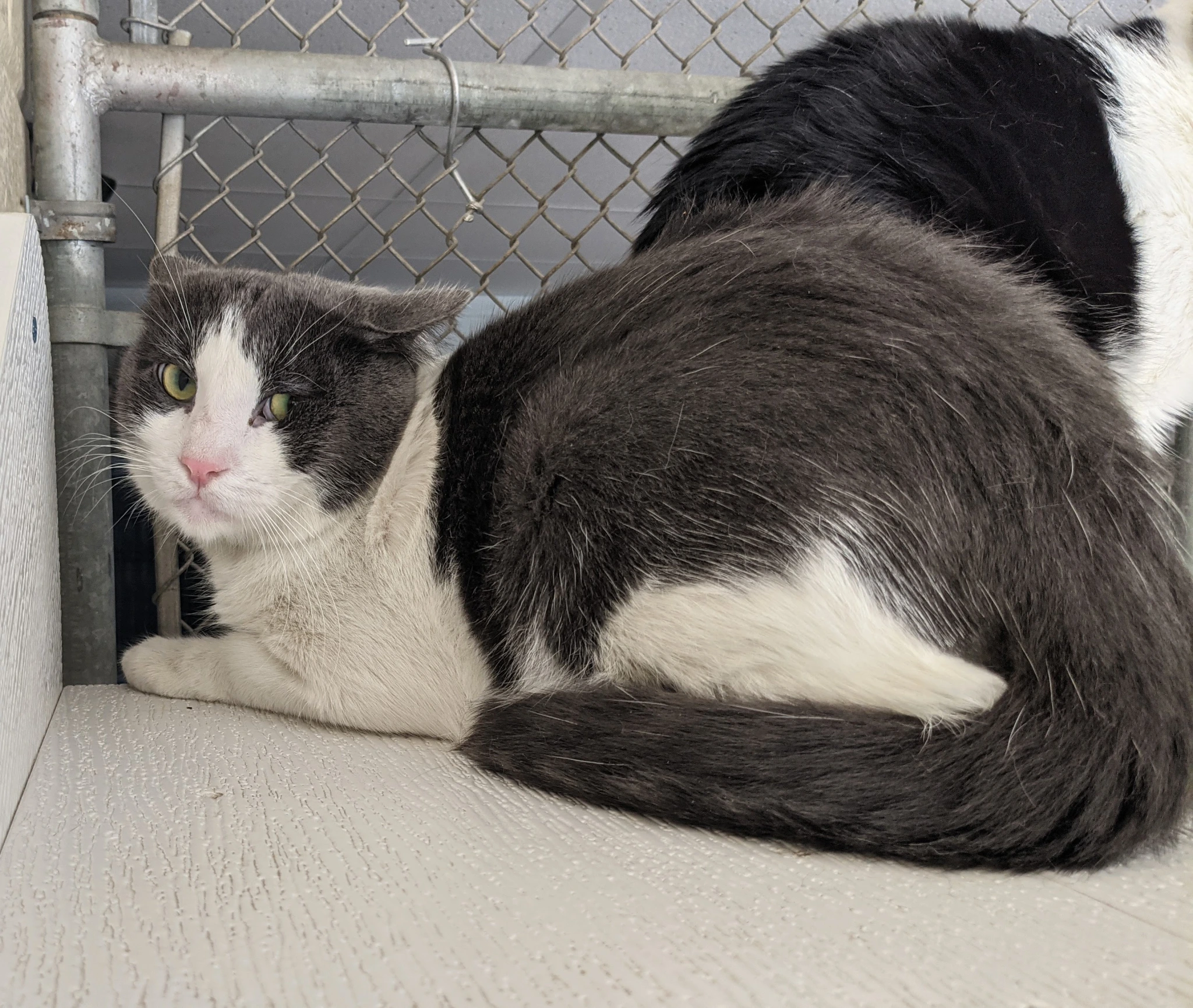
My cat has become aggressive due to his fear. He's always been very skittish but since we moved house last year if we make the slightest movements when he’s around he might run up and attack us, he cowers and might swat when we go to pet him…what can we do?
Due to the aggression, I might recommend talking to your veterinarian about behavioral medicationat the start of this process. I would set up a sanctuary room, invest in some calming pheromones, and try to get the cat confined to that room. If you moved and did not confine him, he was super overwhelmed and has never truly decompressed. Give him that option now. In that room, it’s time for play therapy. Once he seems comfortable and you feel confident that the incidents have stopped, you can pet him again, start slowly introducing to the home. You might use baby gates to assist you – stack them up! Otherwise, just close any unnecessary doors and let him explore the home with those areas shut. It could still be overwhelming – if he does get overwhelmed, get him back into the room and try again at another time. Try and have a play session before letting him out and make sure the home is comfortable for him… are there things for him? Escape routes? Activities? You can also mark his scent around the home preemptively using an item like a towel or t-shirt to pet him, particularly around the cheeks and base of the tail, then rubbing that towel around low corners of the home, areas he would cheek rub if he were happily roaming around himself. From there, maybe leave the towel in an area he might wish to rest.
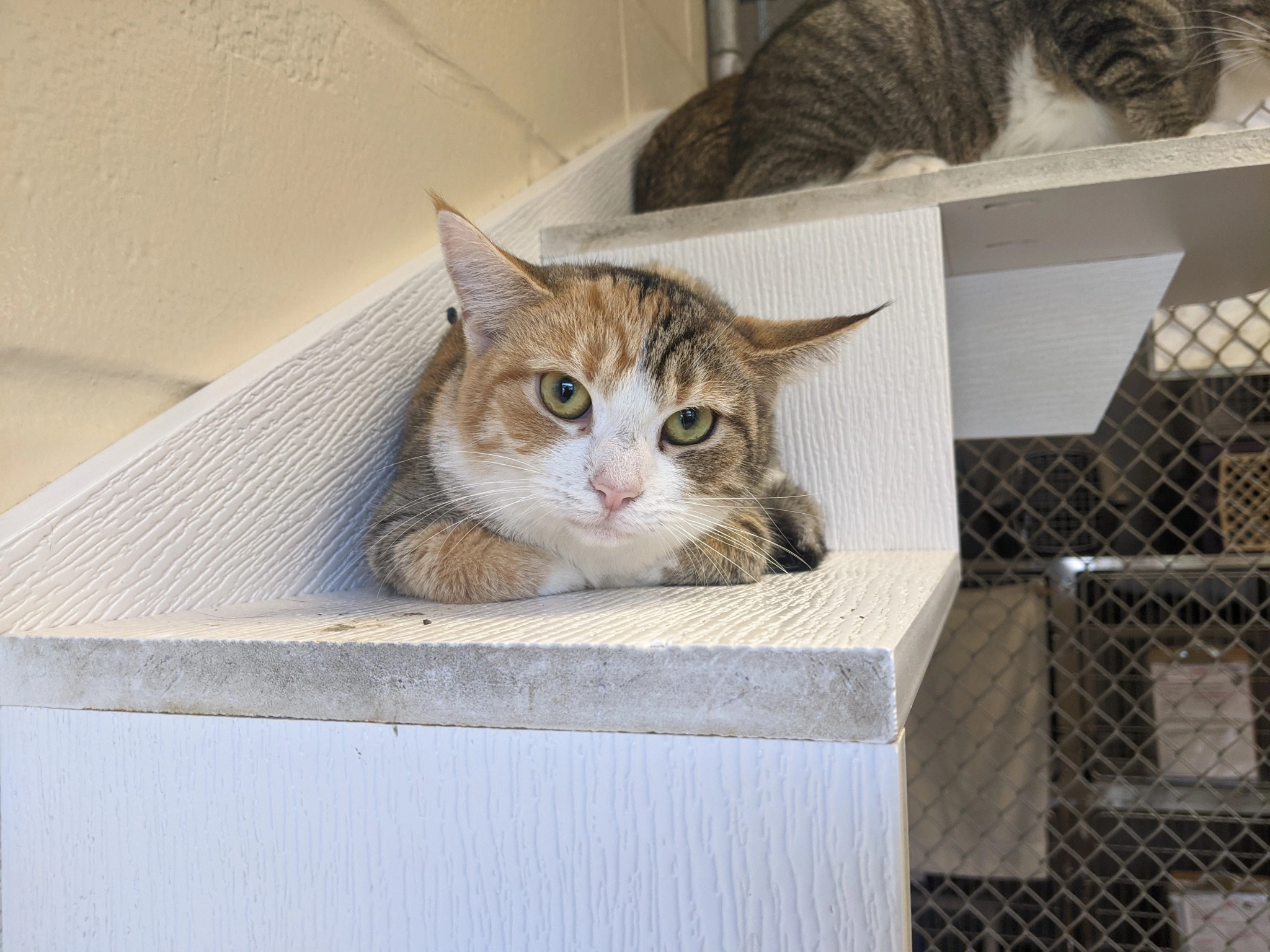
We added a new cat to our home and the introduction went well, they both get along...but my existing cat has become very nervous. She’s less affectionate, has become a bit food aggressive, growling while she eats, and I think she pooped in the basement the other day. I didn’t see it happen, but I have to assume it was her.
It sounds like we have some resource issues here. This isn’t necessarily a scaredy cat, but they are more susceptible to these issues. She’s insecure right now, but you can fix that with a few adjustments around the home! You’re going to need to set up multiple feeding areas. If you free feed, this means bowls in different areas of the home, and I'd recommend doing the same with watering areas. It is a good idea to separate food and water from each other as well, if you can. If you don’t free feed it's even easier! Give each cat their own dish, feed them in different rooms if you need to, and pick up the dishes after they eat so there is nothing to guard or feel territorial or insecure over. (When food aggression suddenly appears, I would also recommend scheduling a vet visit, just in case!) You want to have at least three litter boxes with two cats, and remember that they need to be in separate areas OR at least six feet apart. Give all of these a shot and see how things work out. Calming aids can assist, too!
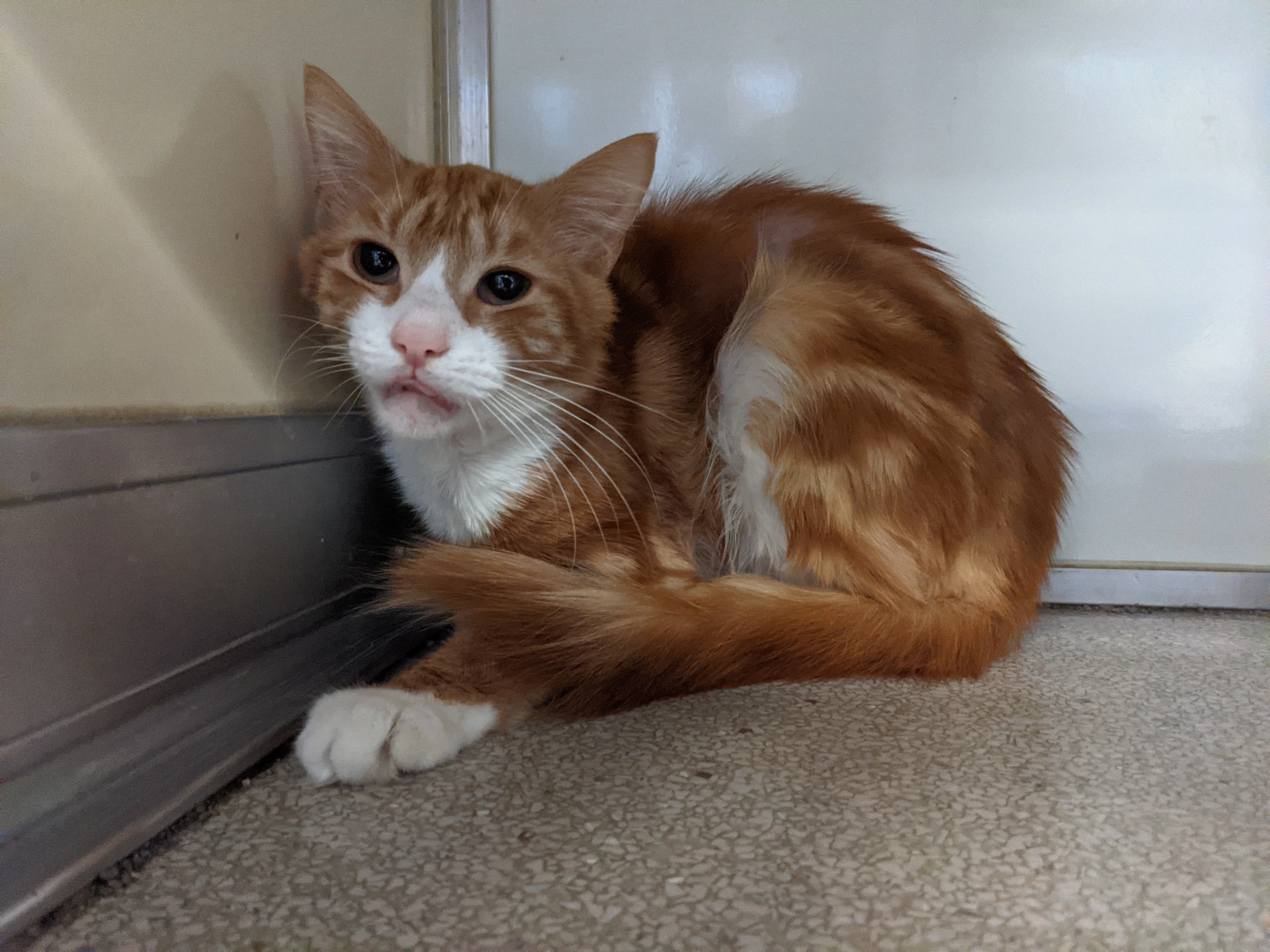
My cat has randomly started scratching at the back door, howling all night, doesn’t want to be touched, and is hiding a lot more. She had a fight with her brother and now runs from him so we had to separate them, she’s tipping over her food and water bowls trying to "cover" them...she’s never acted like this before.
Odd, for sure! To accurately answer, I'd need more information - but with what's here, I'd guess that you’ve got something going on outside and she’s extra sensitive. She's experiencing territorial insecurity because her castle is under attack! More than likely, another cat is threatening her territory - more than likely, spraying your home! But, it could just be wandering around in sight and freaking her out! (I have seen similar cases set off by raccoons eating trash on the deck at night! It doesn't always have to be cats. This cat got spooked and experienced a whole slew of behavioral problems from aggression and LBA, to food bowl tipping and door darting!) I’d keep an eye out and maybe set up a trail cam. You can pick up a Scarecrow (not a doll on a stick, a water deterrent!) or ultrasonic deterrent to keep cats and cat-sized animals away. You may require behavioral medication or calming aids, you may wish to confine her for a period to calm her...but she may just yowl at the door to get out. Switch to scheduled feedings and pick up the dishes when she finishes, get a sturdy fountain that can’t be tipped and locate it away from a door. Play therapy, lots of play therapy. Swap locations with her and her brother – confine her for periods, let him out, swap...let's reintroduce them and eventually reward them for interacting positively with, or ignoring each other.
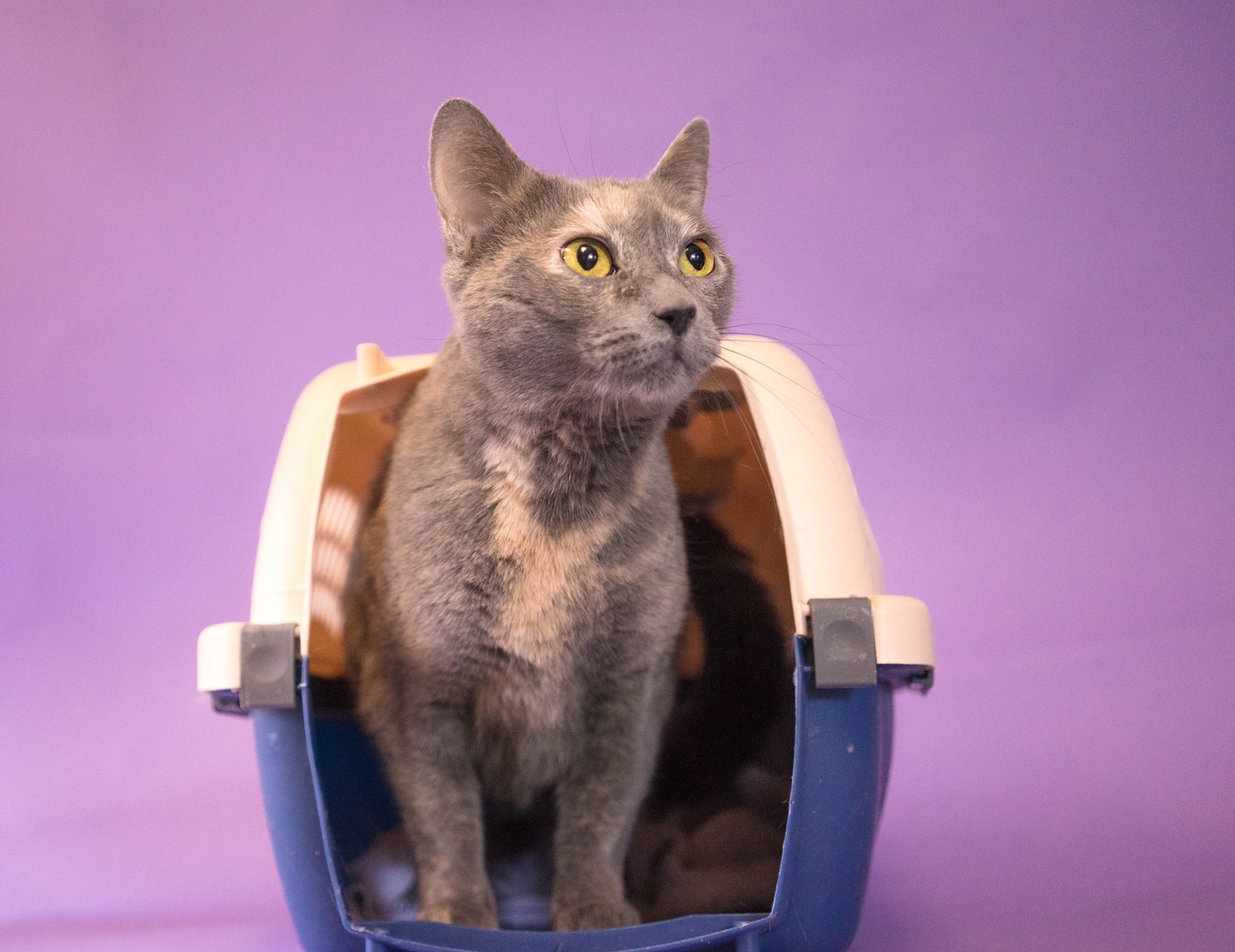
This girl was an example of a carrier crutcher, but opposite to the above description. She was only confident in/around her carrier!
My cat’s always been shy but was never too bad. She’s 13 now and we’ve always wanted to get a dog, so once we bought a house we said we would get one. We moved last year and we decided to adopt two puppies. They’re absolutely wonderful and it’s what we’ve always wanted, but the cat is miserable. She hides most of the time, we rarely see her anymore, she’s started avoiding the box. When I put her food down when one of the dogs is around she’ll swat them and run right back in the opposite direction. They haven’t even done anything! I’m tired of it…why can’t she just accept them?
Oof. Here comes a little tough love. This one is on you. You have a senior cat who you admit is more on the anxious side, and has always been on her own so getting another animal in general would be stressful...but instead of getting one dog, an older dog - you got two, and puppies nonetheless. High energy, rowdy, loud puppies. You may have waited a bit longer and not had to worry about her adapting; but you weren't patient or considerate, and now everyone's stressed. Dogs are a lot to take for a cat, especially a senior. A lot of energy, a lot of noise…if she’s never been around one, it’s absolute chaos. I can’t speak to how you introduced them, but if you did not perform any exercises such as keeping them separate, getting the dogs trained to sit and stay on a lead before introducing them and bringing one in the room with her to sit quietly and let her take the initiative. If in lieu of that you instead threw everyone in the house together immediately, that’s another factor that makes this incredibly difficult. I won't assume that, but that's more often than not the scenario I see. From here, give her sanctuary in the room she hides in. Put a box there, feed her there. Let her have that crutch. If you did not do the exercises mentioned above, you can try them after some separation. If that’s unsuccessful, in all honesty I would recommend either allowing her to simply live out the rest of her time in her sanctuary, or to rehome her...as I doubt you’re interested in giving up the new additions; you’ve outgrown the old, boring cat. You can’t make her fit your new mold. You changed; she didn’t. This was inconsiderate and far too fast. If you keep her, don't abandon her. Shower her with love; don’t give it all to the dogs. Keep calming aids going – the noise is sure to still bother her. Step up and do the absolute best you can for her or find someone else that will.
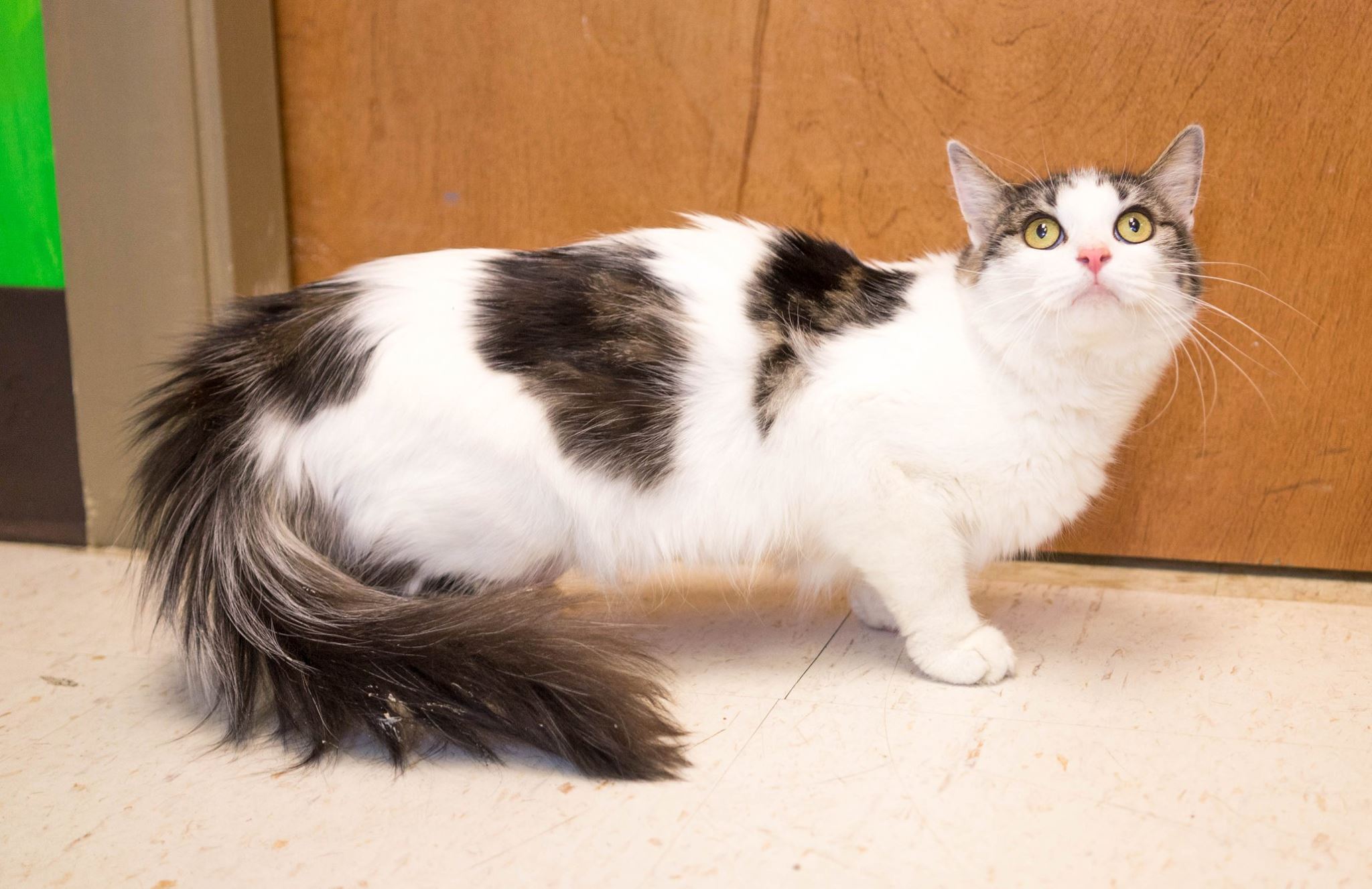
Alright, that was a lot of scared cat photos, it might have become depressing. How about a change in pace for the last few? I’ve got photos for days. Kittens? How about kittens?
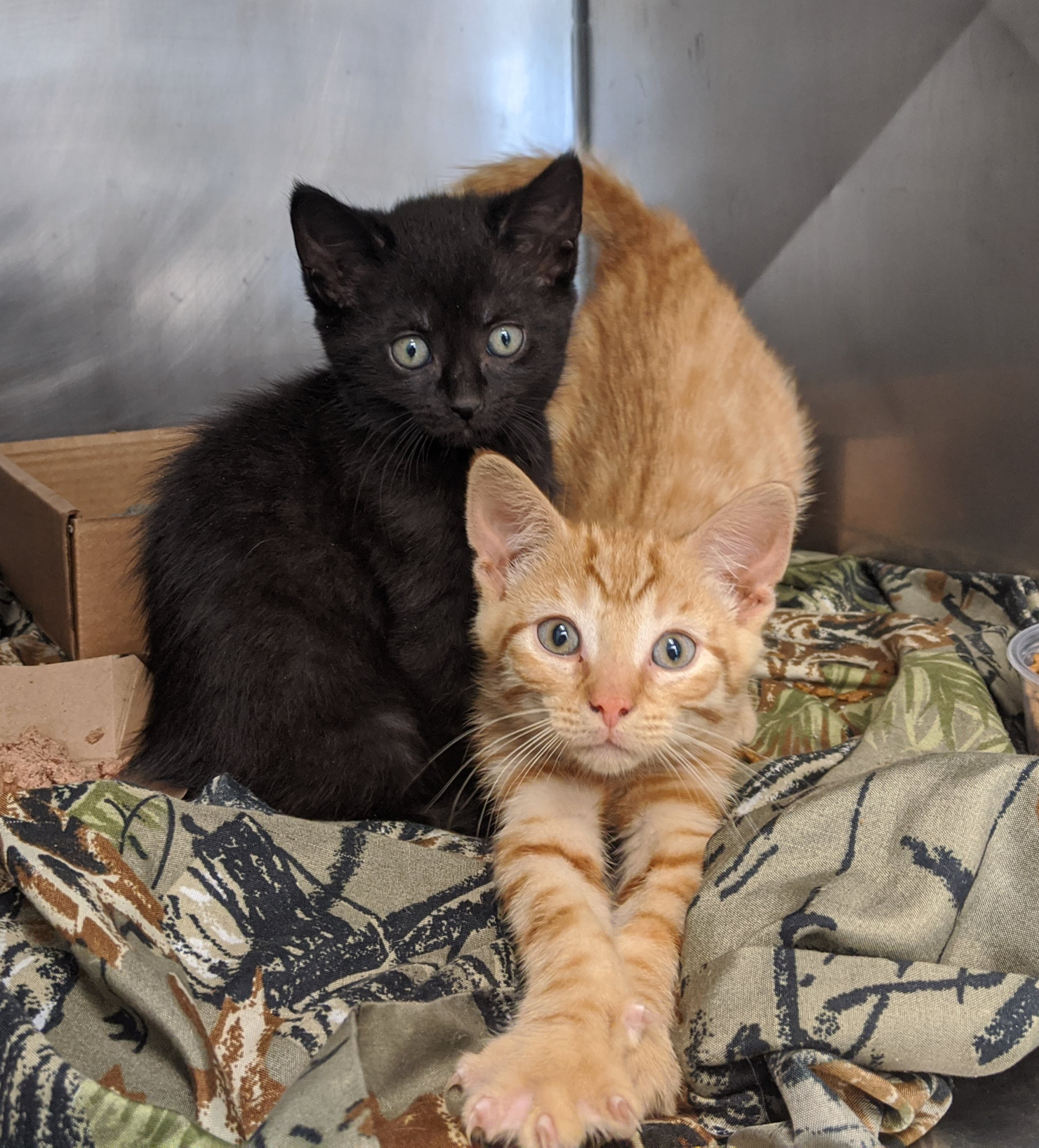
There we go! So confident and happy!
In summary, with scaredy cats you should:
- 1. Increase play, physical activities, and/or mentally stimulating activities where possible. This can be food puzzles, foraging, clicker training, phone games, cat TV, window watching, and beyond.
- 2. Increase territorial security – have enough resources for all cats in the home, provide adequate littering, eating, drinking, hiding, perching, resting, and play area for them. Be on the look out for threats outdoors.
- 3. Keep change and other stressors low – keep their environment consistent and maintain routines. Prepare for things you know will set them off – use calming aids and gradually implement the things you are able to.
- 4. Never flood and never introduce new people, animals, or environments too quickly.
- 5. Move at their pace.
- 6. Use calming aids such as pheromones, in some cases catnip, zylkene, hemp oil, or behavioral medication from your vet to assist as needed.
- 7. Watch their health, consult with a veterinarian on behavioral and physical health as it could be something deeper.
- 8. Do not force them to fit your mold. If they do not fit, they do not fit. Rehoming sometimes is the best option. Sometimes it's just not meant to be. As stated before, if it came from outside...it may belong there! You don't decide for them.
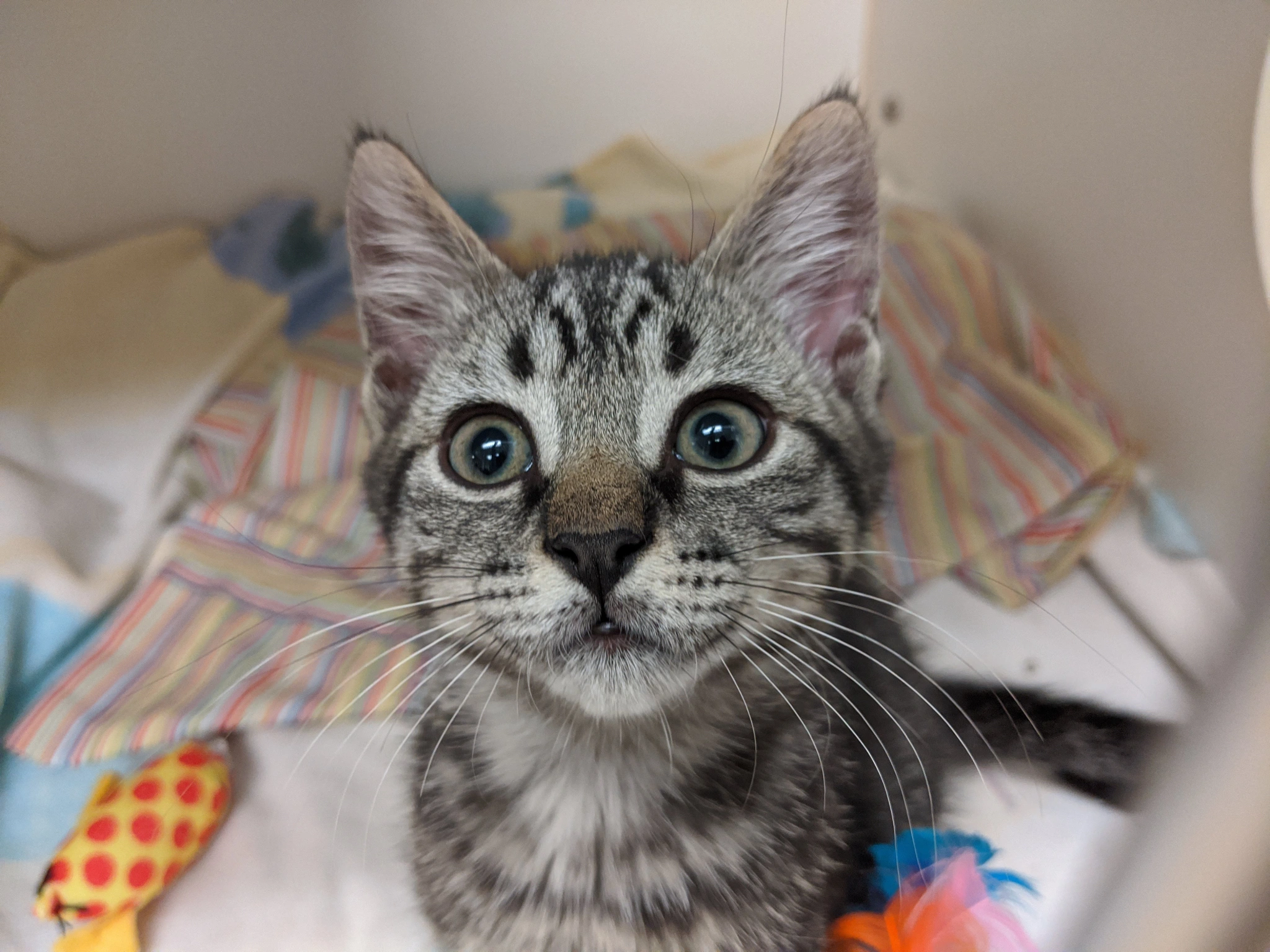
Until next time.
-Meg
